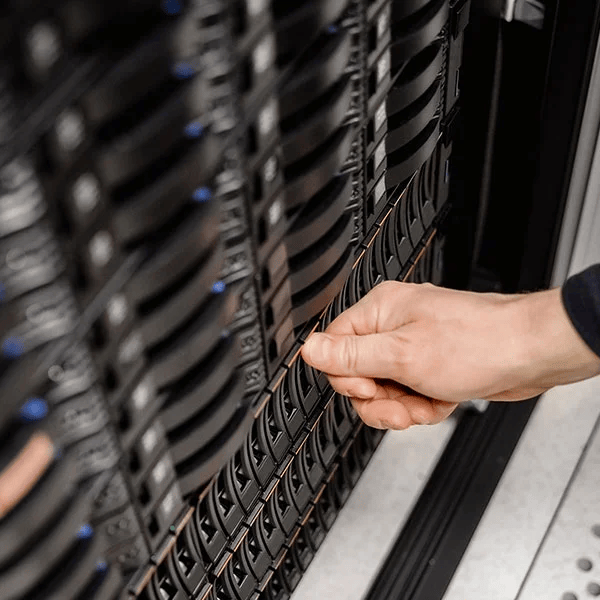Data Center & Edge IT Solutions
Explore MAST’s advanced Data Center & Edge IT Solutions, ensuring seamless operations, scalability, and security for your digital infrastructure.
Data Center & IT Edge Solutions
Data Center & IT Edge Solutions
Data Center has become more powerful than ever today and businesses are highly dependent on the components of a DC viz. business critical applications, Server – Storage – Virtualization with real-time back up to have best in class security solutions. The speed of change in the data center due to virtualization has been unprecedented.
With the Data Center and Edge IT solution, MAST ensures that infrastructure is available to customers for all their IT needs in Data Center, Networking and Security requirements through effective, holistic and flexible solutions using updated technologies.
Data Center Solutions

A data center is a dedicated facility for housing computer systems and related components, ensuring uninterrupted IT operations. It incorporates redundant infrastructure for power, communication, and security, vital for business continuity. Modernization efforts focus on enhancing performance and energy efficiency. Information security is paramount, with stringent measures to prevent breaches. Data center transformation follows an integrated approach, including standardization, virtualization, automation, and security enhancements, carried out over time. This contrasts with traditional serial upgrades, ensuring a more efficient and secure environment.

HCI

Hyperconverged infrastructure (HCI) is a software-defined IT infrastructure that virtualizes all of the elements of conventional “hardware-defined” systems. HCI includes, at a minimum, virtualized computing (a hypervisor), software-defined storage, and virtualized networking (software-defined networking).HCI typically runs on commercial off-the-shelf (COTS) servers.
The primary difference between converged infrastructure and hyperconverged infrastructure is that in HCI both the storage area network and the underlying storage abstractions are implemented virtually in software (at or via the hypervisor) rather than physically in hardware. Because software-defined elements are implemented in the context of the hypervisor, management of all resources can be federated (shared) across all instances of a hyper-converged infrastructure.

Lets Connect With Us
Just send us your questions or concerns by starting a new case and we will give you the help you need.
Private Cloud

Private cloud is a type of cloud computing that delivers similar advantages to public cloud, including scalability and self-service, but through a proprietary architecture.
Typically, public cloud is cloud computing that’s delivered via the internet and shared across organizations. Whereas, Private Cloud is cloud computing that is dedicated solely to your organization. Hybrid cloud is any environment that uses both public and private clouds.
There are several advantages of Private cloud:
- More Control. Private clouds have more control over their resources and hardware than public clouds because it is only accessed by selected users.
- Security & privacy
- Improved performance

SDN

Software-defined networking technology is an approach to network management that enables dynamic, programmatically efficient network configuration in order to improve network performance and monitoring, making it more like cloud computing than traditional network management.
SDN is meant to address the static architecture of traditional networks. SDN attempts to centralize network intelligence in one network component by disassociating the forwarding process of network packets (data plane) from the routing process (control plane). The control plane consists of one or more controllers, which are considered the brain of the SDN network where the whole intelligence is incorporated. However, centralization has its own drawbacks when it comes to security, scalability and elasticity and this is the main issue of SDN.

Get Free Consultation with Our Expert!
Get a 30-min free consultation from the field expert.

